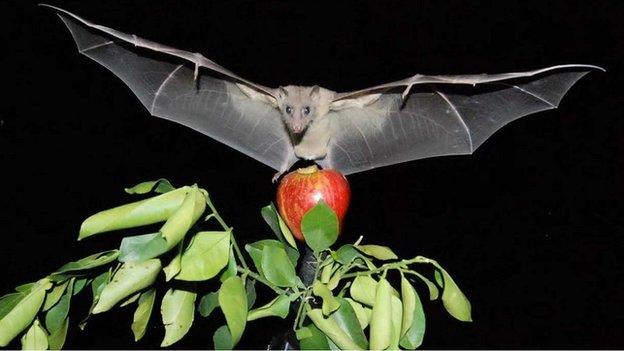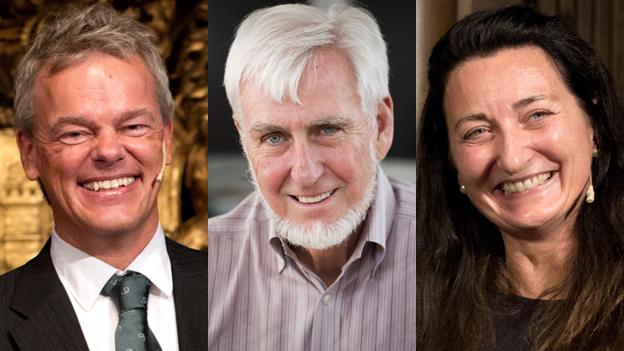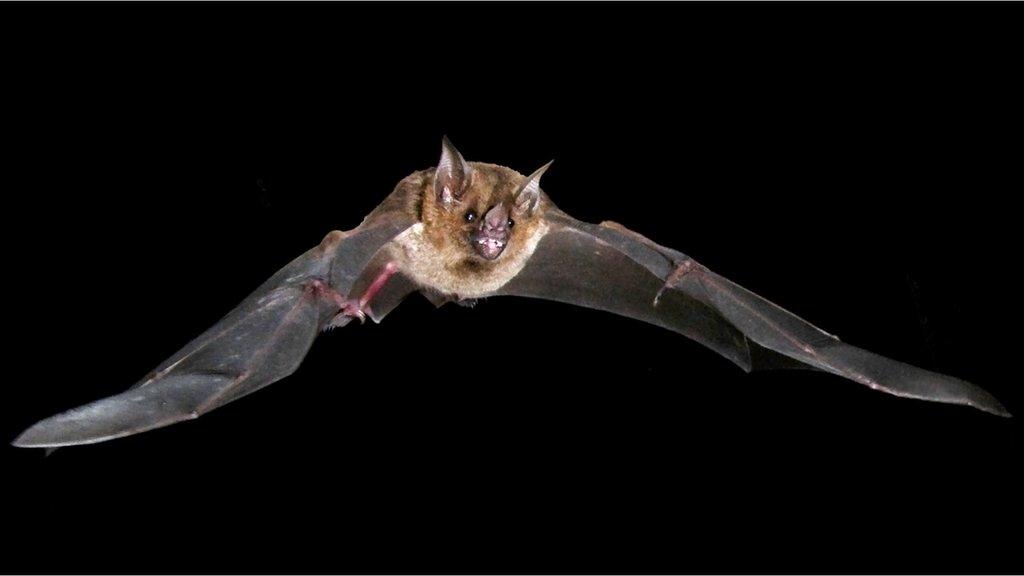Bat nav: Animals' 3D brain compass found
- Published
Researchers recorded from the bats' brains as they flew and landed.
By recording from the brains of bats as they flew and landed, scientists have found that the animals have a "neural compass" - allowing them to keep track of exactly where and even which way up they are.
These head-direction cells track bats in three dimensions as they manoeuvre.
The researchers think a similar 3D internal navigation system is likely to be found throughout the animal kingdom.
The findings are published in the journal Nature.

The researchers think their findings in bats could apply throughout the animal kingdom
Lead researcher Arseny Finkelstein, from the Weizmann Institute of Science in Rehovot, Israel, explained that this was the first time measurements had been taken from animals as they had flown around a space in any direction and even carried out their acrobatic upside-down landings.
"We're the only lab currently able to conduct wireless recordings in flying animals," he told BBC News.
"A tiny device attached to the bats allows us to monitor the activity of single neurons while the animal is freely moving."
Decades of study of the brain's internal navigation system garnered three renowned neuroscientists this year's Nobel Prize for physiology and medicine, external.
The research, primarily in rats, revealed how animals had "place" and "grid" cells - essentially building a map in the brain and coding for where on that map an animal was at any time.
Mr Finkelstein and his colleagues' work in bats has revealed that their brains also have "pitch" and "roll" cells. These tell the animal whether it is pointing upwards or downwards and whether its head is tilted one way or the other.
"Some of the neurons are encoding a combination [of the two]," Mr Finkelstein explained. "So they're sensitive to a particular position of the head when it's at a particular angle."
Taking recordings from these head-direction cells to see exactly when they were active, the researchers showed that the animals had a 3D positioning system - a physical representation in their brains of where they were, where they were pointing which way up they were.
"And we don't think our results are specific to bats," said Mr Finkelstein.
"Bats and rats are separated by millions of years of evolution. And yet, if you look at the same brain regions of these two species, you find place cells, head-direction cells, and you find grid cells.
"That's why we think this might be relevant for humans too. So we think that's one of the exciting elements in neuroscience."
In a related article, Prof May-Britt Moser, from the Norwegian University of Science and Technology in Trondheim, who shared in the 2014 Nobel, described the work as a "beautiful study".
Mr Finkelstein added that an understanding of how animals, including humans, built a "sense of place" was important in our understanding of memory.
"To remember events, we need some sort of encoding of where we were," he explained.
"So, many people think these cells could be a scaffold for [our memories]."
- Published6 October 2014

- Published5 July 2013
